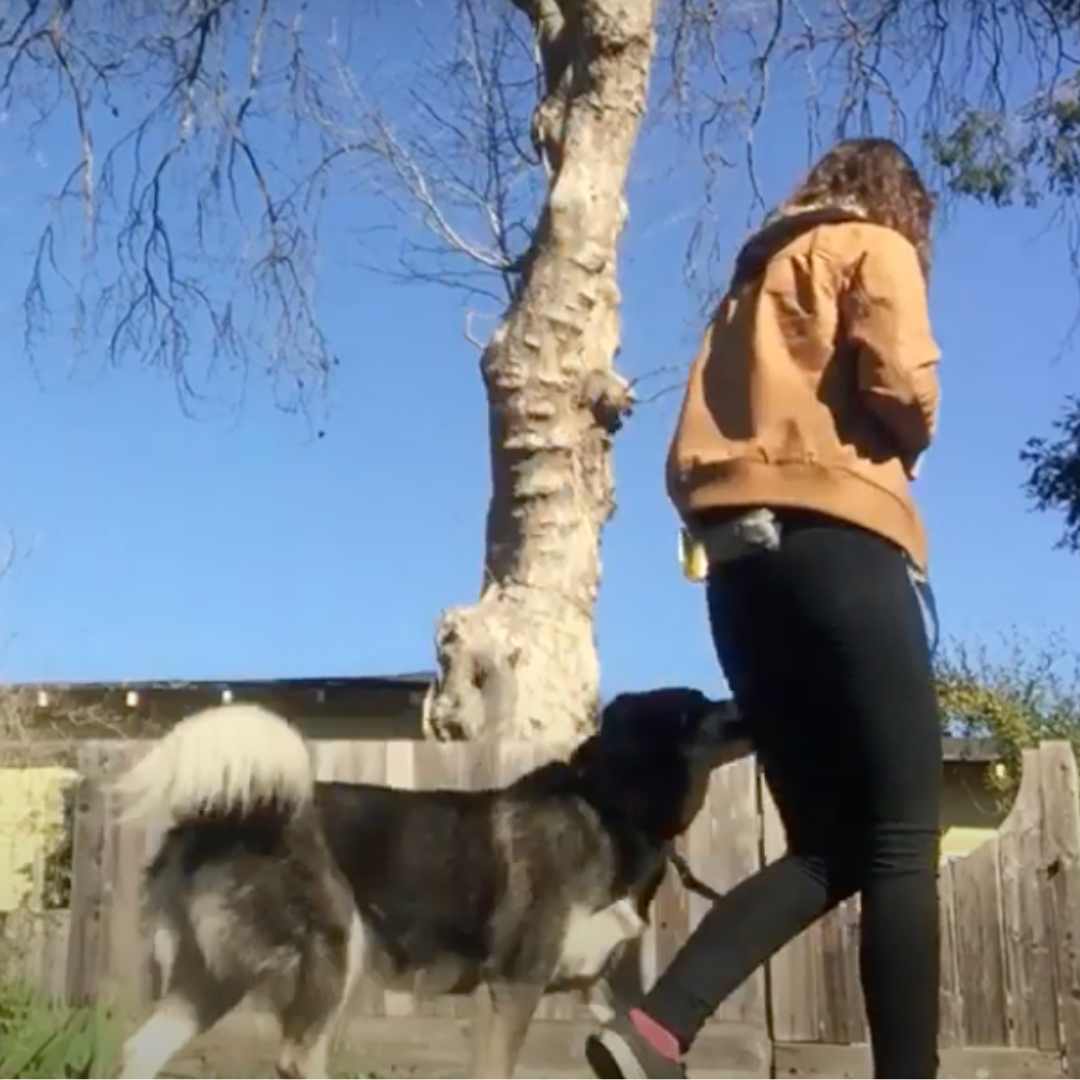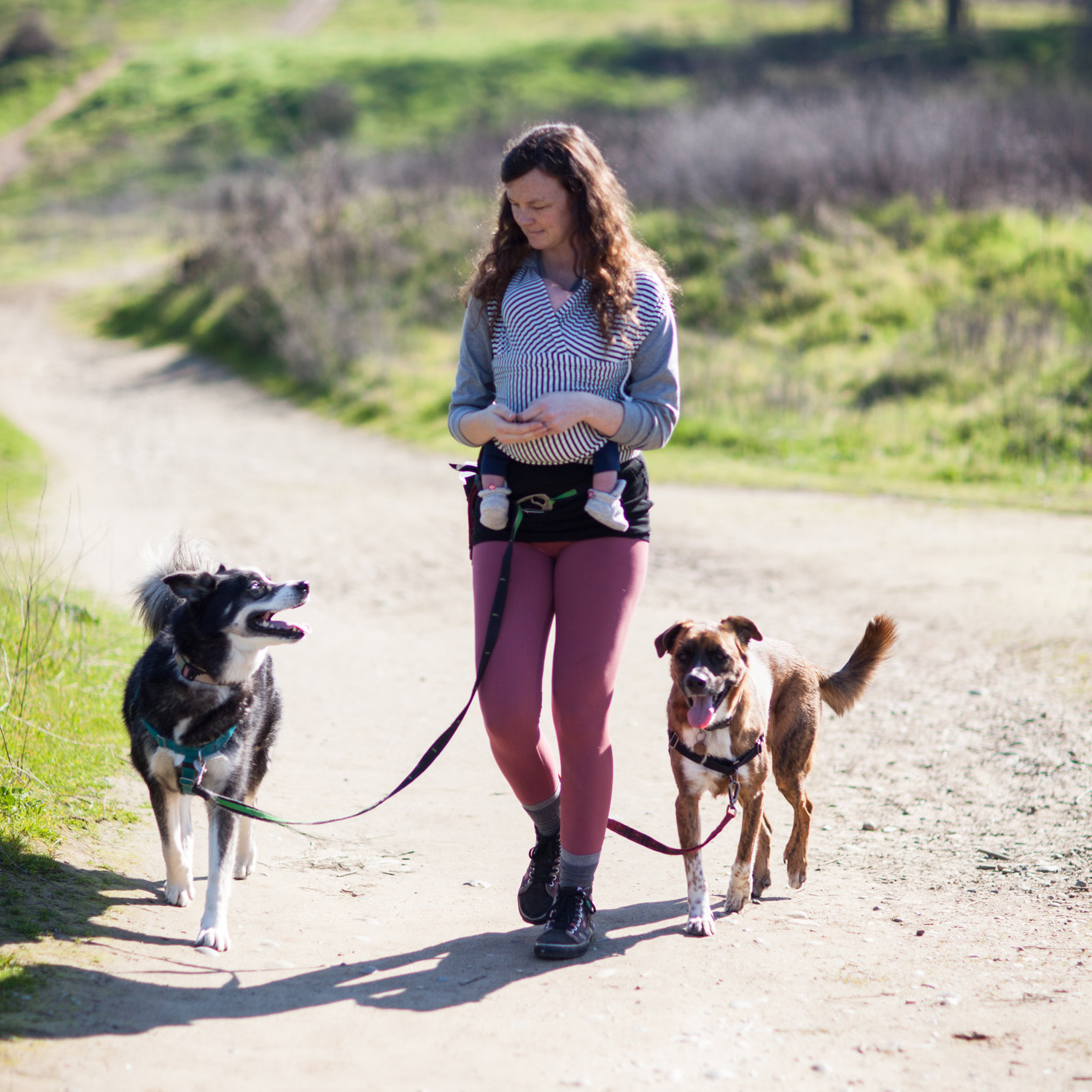After all your loose leash training and practicing, what do you do when your dog's loose leash walking skills go poof...
Everything we’ve been talking about in the Walking Channel up until now is about preventing pulling - and that’s ideal. In dog training, we always want to think more about reinforcing desirable behaviors (to walk nicely, for example) instead of how to “stop” certain behaviors like stopping your dog from pulling on the leash.
But, it happens, dogs pull!
Life isn’t perfect and even if you practice and practice your loose leash walking, there will likely be some real-life situations when pulling on leash pops up (squirrels, I’m looking at you…) Most dogs have their momentary leash manners lapses -- no matter if you're a dog parent, dog walker, even a certified professional dog trainer, sometimes our dogs pull. So, what do we do?
Here are six troubleshooting pro tips to stop leash pulling and get your dog to walk with good leash manners for your entire walk:
Your Dog's Plan
Stop! Don't read this long article. Instead, get everything you need to know, including all advice on Leash Manners, in a customizable step-by-step plan for your dog created by our community of certified trainers and nutritionists.
Tip 1: Don’t reinforce the pulling
Any behavior that gets stronger or is maintained is being reinforced by something. A dog's leash pulling is generally reinforced by getting to go places or access to interesting things faster. For many dogs, this applies even if it’s only being intermittently reinforced!
Dogs do what works for them -- sometimes that's pulling
Often dog owners try to avoid reinforcing the pulling most of the time, but every now and again they just don’t feel like dealing with it, and their dogs learn they can drag their human along on a tense, tight leash to the fire hydrant or tree, or whatever it may be.
That's how dogs learn it’s still worth trying because sometimes it pays off to pull on the leash. Instead, you want to teach your dog that really good things happen when they stop pulling and walk nicely beside you.
Try this
If your dog pulls on leash just stop walking forward. You're helping your dog learn that tension on the leash means forward motion stops. In other words, they don't get to go where they want to if they pull on the leash.
Tip 2: Resist the urge to punish your dog by yanking or coming to a harsh, sudden stop
Keep in mind that dogs tend to resist tension, and avoid creating a back and forth of pulling harder, yanking harder, pulling harder, yanking harder, etc. Any yanking by you will naturally signal your dog to pull harder. I hope it goes without saying but electronic collars also shouldn't be used at any point.
Try this
If your dog pulls, come to a soft stop and create a gentle boundary. You’re not punishing the pulling but simply letting your pup know that pulling on the leash stops the fun.
Leash Manners
Interested in Leash Manners? Follow topics you're interested in to customize your dog’s step-by-step plan so it's most helpful and tailored to your dog when you're ready to get started.
Tip 3: Turn your body in the opposite direction
Dogs are incredibly visual. They read our bodies for information constantly. I see many people make the mistake in training dogs of following the steps above and then standing, facing forward, waiting for their dogs to figure out to begin walking toward them. What they aren’t realizing is that their body is still saying “go forward.”
Try this
After you've come to a soft stop, turn in the other direction to get your dog's attention and let your dog know you'd actually like him or her to start walking in a different direction now (yes, away from that smelly shrub!)
Note: It’s helpful to NOT have an agenda or timeframe about where you’re headed as you practice this, since there will likely be a bit of zigzagging requiring patience at first!
Tip 4: Mark (click) and treat when your dog turns to follow as you walk
This is the opportunity to mark and reward your very good dog for the leash walking behavior we want! Remember to deliver the treat directly by your side (your hand should be at the seam of your pants) as you continue to move. Then, you can turn back around and continue to walk in the same direction. When it becomes clear that your dog understands you're the most rewarding thing happening, your dog stops pulling and the leash remains loose.
Try this
As your dog turns with you, click and reward your dog with a treat. Deliver the treat at your side to teach your dog where they should ideally be. Turn back around and continue to walk in the direction you started. Repeat as necessary every time your dog pulls.
Your Dog's Plan
Stop! Don't read this long article. Instead, get everything you need to know, including all advice on Leash Manners, in a customizable step-by-step plan for your dog created by our community of certified trainers and nutritionists.
Tip 5: Adjust rate of reinforcement - high frequency, high value rewards as needed
If you find you are moving in circles, especially because of a specific distraction, instead of repeating this over and over, increase your rate of reinforcement while in the presence of that specific distraction.
Try this
Say there is a cat hiding under a car on your path and your dog keeps pulling toward it. Once you turn away, mark and treat and begin turning back toward this incredibly exciting sight, immediately begin to mark and treat rapidly as you move closer. If you’re speedy enough, you can keep your dog engaged by earning reinforcement (yummy treats) at your side, and avoid the lunge towards the cat. Then, once you’ve passed this big distraction, you can slow your rate of treating back to “cat-less” levels and walk calmly once again.
Tip 6: OR use distance to your advantage to set up your pup's leash walking success
This applies to distractions that you don’t need to walk right past. For example, other dogs. If other dogs walking toward you is too hard to work through, try crossing the street or moving off the pathway to get some space.
Why this matters
Using distance is one of my go-to training methods that falls into the category of knowing your specific dog and setting your pup up for successful good behavior. Why put your dog in a tough position (and maybe the other dog too) and possibly set him or her up to fail when you don't have to? Set your dog up for success and give yourself a chance to reward and reinforce the leash behavior you want to see as you walk politely together!
Try this
If your dog is really interested in a certain stimulus and pulling you towards it, create some distance. Cross the street or walk the other way. Know your dog and how to help him/her be most successful in the leash training you're working on together.
Walking
Need more advice? Browse all guides in the Walking Channel on topics like Leash Manners - created by our community of certified experts for you and your dog.
Happy walking to you and your dog with your newly honed good leash manners!
*Sidenote about the accompanying video: In the video shared along with this guide, I am mimicking the motion of pulling by tossing a treat ahead of Koa (not what you would actually do!). I am also using a verbal marker (“yes”) instead of a click, and it’s a little hard to hear.
If your dog pulls on leash, learn how to avoid reinforcing pulling, redirect your dog's focus, and use body language so you can enjoy a relaxed walking experience with your dog.
Choose how you'd like to view this guide's video.

Next up in the Walking Channel on Dogly
I hope these troubleshooting tips help you walk calmly together with your dog and have FUN. If you have any questions about anything Leash Manners related whether that's about the basics of loose leash walking or how to train your dog not to pull, jump over to the discussion in the Walking Channel on Dogly or you can work with me 1-1.
The next guide is for those of us with two dogs. If you want to learn how to walk two dogs at one time with no pulling, continue your Leash Manners training here.

